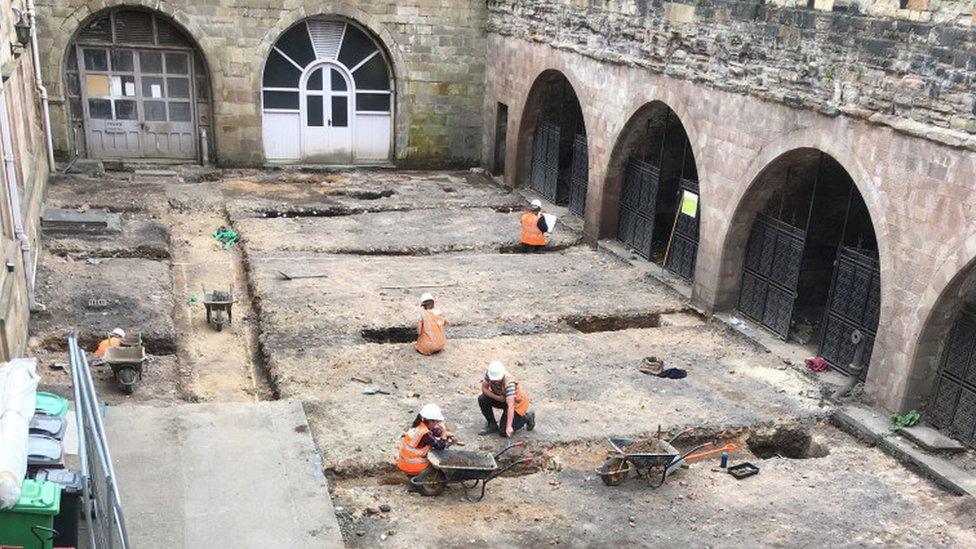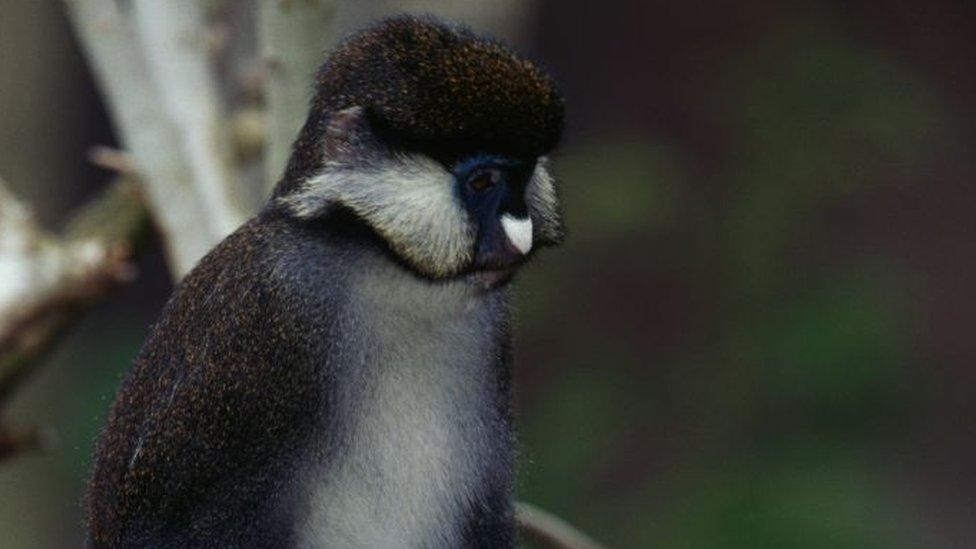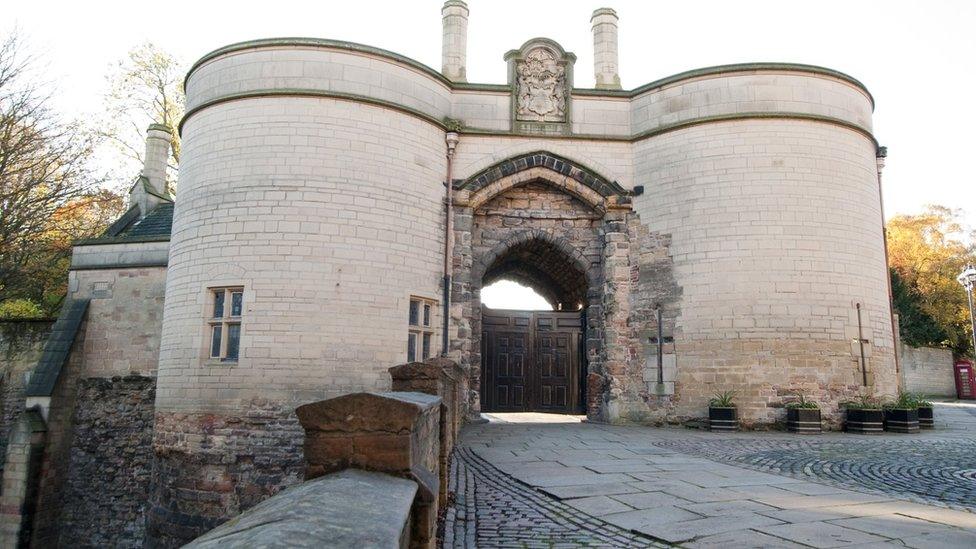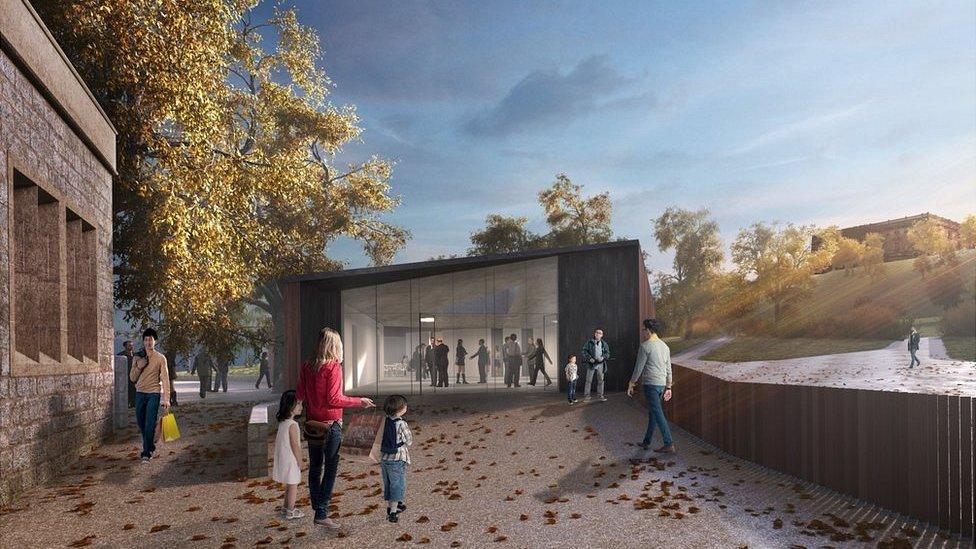Georgian monkey bones found at Nottingham Castle
- Published

Archaeologists cannot tell how the monkeys died but believe the wear on their teeth suggest they lived to a "good age"
The bones of three monkeys dating back to Georgian times have been found by archaeologists during the redevelopment of a city's castle.
Nottingham Castle has been closed to the public for the last three years to undergo a £30m refit.
The bones were found on the site of a new gallery in excavation work carried out alongside the development.
It is thought the animals could have been exotic pets belonging to former resident Jane Kirkby.
Gareth Davies, head of archaeology at the York Archaeological Trust, said the bones were from the late 18th Century.
He said: "At that time, the ducal palace had been converted to apartments and these bones were just found in a levelling layer of rubbish.
"We don't know whether originally they were buried and then disturbed."

Gareth Davies said the bones date back to the late 18th Century
He said the team of archaeologists was used to finding animal bones but this did come as a surprise.
The remains of a European crane - another animal considered exotic at the time - were also found.
"We basically think at some point people were keeping a menagerie, like a little zoo, in the grounds of the ducal palace when it was turned into apartments," Mr Davies said.

Archaeologists said the monkey bones belonged to guenon monkeys from central or western Africa
Yvonne Armitage, a former volunteer at the castle, suspects the most likely resident to have owned monkeys at that time was a woman called Jane Kirkby.
Miss Kirkby - dubbed "Nottingham Castle's most flamboyant resident" , external- lived there between 1791 and 1825.
Her rank and wealth came from her grandfather who was an illegitimate son of the Earl of Chesterfield, Ms Armitage said.
She said she had also uncovered a reference to Miss Kirkby having a "large ape" as a "constant companion" during her research.

Jane Kirkby lived in an apartment on the grounds of Nottingham Castle between 1791 and 1825
From the large fragments of bone found at the castle, Mr Davies said they were able to tell they belonged to guenon monkeys from central or western Africa.
He said it was not known how they died but he said the wear on their teeth suggested they lived to a "good age".
Nottingham Castle has had a tumultuous history, with the previous version torn down following the English Civil War in the 17th Century.
It was replaced by a palace for the Duke of Newcastle, but then that was burned down in 1831 after riots following the defeat of a bill in Parliament to expand the vote.
The castle is due to reopen on 21 June.

Follow BBC East Midlands on Facebook, external, on Twitter, external, or on Instagram, external. Send your story ideas to eastmidsnews@bbc.co.uk, external.
Related topics
- Published19 April 2021

- Published1 July 2018

- Published8 March 2014
